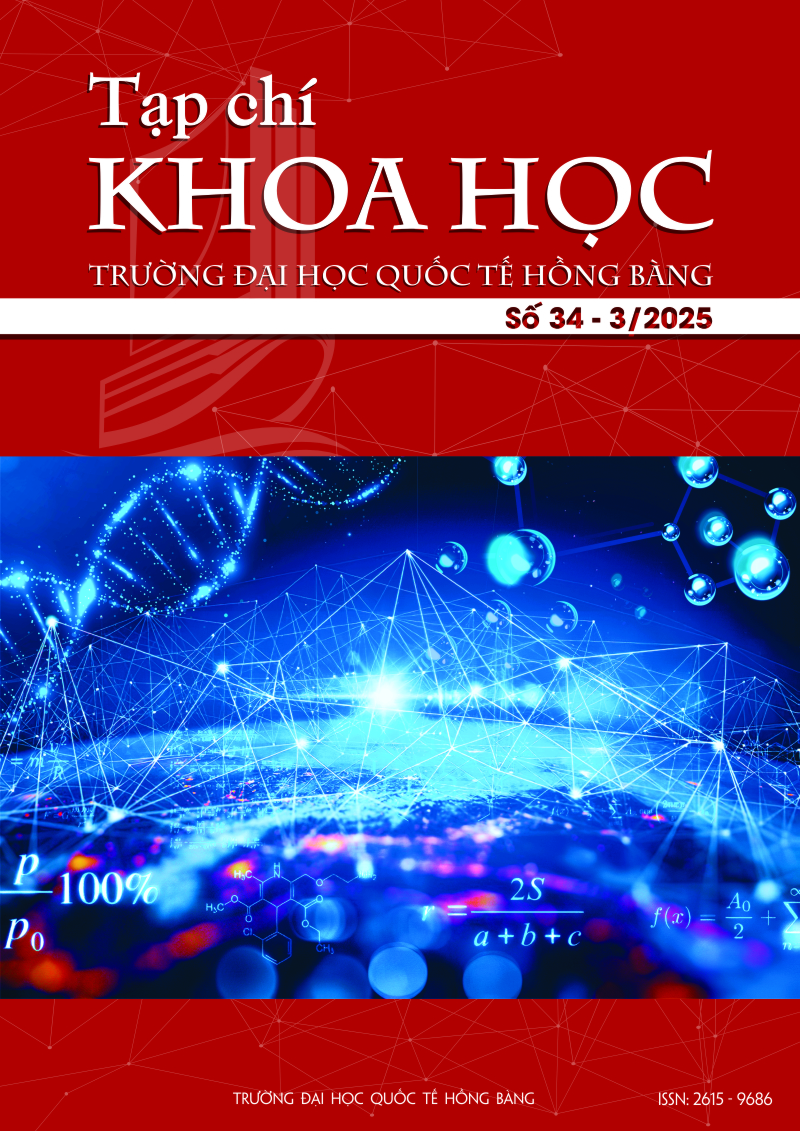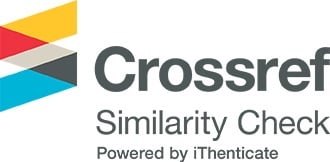Xác định khả năng kháng khuẩn và kháng nấm của cao chiết lá Hải kim sa (Lygodium japonicum (Thunb.) Sw.)
Các tác giả
DOI: https://doi.org/10.59294/HIUJS.34.2025.746Từ khóa:
Hải kim sa, Pseudomonas aeruginosa, Staphylococcus aureus, Candida albicansTóm tắt
Đặt vấn đề: Nhiễm khuẩn và nấm ngoài da là một bệnh lý phổ biến. Các loại thuốc hóa học có nhiều tác dụng phụ nên các chiết xuất từ dược liệu ngày càng được chú ý nghiên cứu. Mục tiêu nghiên cứu: Đề tài này được thực hiện nhằm xác định khả năng ức chế Pseudomonas aeruginosa, Staphylococcus aureus và ức chế nấm Candida albicans của các cao chiết từ Lygodium japonicum. Đối tượng và phương pháp nghiên cứu: Lygodium japonicum được chiết bằng cồn 70 % và cô đặc để thu được cao cồn toàn phần (cao TP). Một phần cao TP được hòa tan với nước, sau đó chiết phân đoạn lần lượt với các dung môi là n-hexan, chloroform, n-butanol thu được các cao chiết tương ứng là cao HE, cao CF, cao BU và dịch nước còn lại là cao nước (cao WA). Cao TP được khảo sát thành phần hóa học. Cao TP và các cao phân đoạn đều được xác định hoạt tính kháng khuẩn và nấm. Kết quả: Cao TP của Lygodium japonicum có chứa chủ yếu các hợp chất carotenoid, polyphenol, flavonoid, saponin, alkaloid, coumarin, phytosterol, acid hữu cơ, tanin. Hoạt tính kháng Pseudomonas aeruginosa cao nhất là ở cao CF với đường kính vùng ức chế (mm) là 12.67 ± 0.58 (mm) và MIC là 156.25 (μg/mL). Hoạt tính kháng Staphylococcus aureus cao nhất là ở cao TP với đường kính vùng ức chế (mm) là 13.00 ± 0.00 (mm) và MIC (μg/mL) là 78.125 (mm). Hoạt tính kháng Candida albicans cao nhất là ở cao TP với đường kính vùng ức chế (mm) là 12.67 ± 0.58 (mm) và MIC (μg/mL) là 156.25 (μg/mL). Kết luận: Lygodium japonicum có khả năng kháng khuẩn Pseudomonas aeruginosa, Staphylococcus aureus và kháng nấm Candida albicans.
Abstract
Background: Skin infections and fungal infections are common diseases. Chemical drugs have many side effects, so herbal extracts are increasingly being studied. Research objectives: This study was conducted to determine the ability of extracts from Lygodium japonicum to inhibit Pseudomonas aeruginosa, Staphylococcus aureus, and Candida albicans. Research objects and methods: Lygodium japonicum was extracted using 70% alcohol and then concentrated to obtain the total alcohol extract (TP extract). A part of the TP extract was dissolved in water, then fractionated with solvents such as n-hexane, chloroform, and n-butanol to obtain the corresponding extracts HE extract, CF extract, BU extract, and the remaining aqueous solution was water extract (WA extract). TP extract was surveyed for chemical composition. TP extract and fractionated extracts were determined for antibacterial and antifungal activity. Results: TP extract of Lygodium japonicum mainly contains carotenoids, polyphenols, flavonoids, saponins, alkaloids, coumarins, phytosterols, organic acids, and tannins. The highest inhibition of Pseudomonas aeruginosa activity was in CF extract with an inhibition zone diameter (mm) of 12.67 ± 0.58 (mm) and MIC of 156.25 (μg/mL). The highest inhibition of Staphylococcus aureus activity was in TP extract with an inhibition zone diameter (mm) of 13.00 ± 0.00 (mm) and MIC (μg/mL) of 78.125 (mm). The highest inhibition of Candida albicans activity was in TP extract with an inhibition zone diameter (mm) of 12.67 ± 0.58 (mm) and MIC (μg/mL) of 156.25 (μg/mL). Conclusion: Lygodium japonicum has antibacterial properties against Pseudomonas aeruginosa, and Staphylococcus aureus and antifungal properties against Candida albicans.
Tài liệu tham khảo
1] L. F. McCaig, L. C. McDonald, S. Mandal, and D. B. Jernigan, “Staphylococcus aureus–associated skin and soft tissue infections in ambulatory care,” Emerg Infect Dis, vol. 12, no. 11, p. 1715, 2006.
DOI: https://doi.org/10.3201/eid1211.060190[2] E. Rossi et al., “Pseudomonas aeruginosa adaptation and evolution in patients with cystic fibrosis,” Nat Rev Microbiol, vol. 19, no. 5, pp. 331-342, 2021.
DOI: https://doi.org/10.1038/s41579-020-00477-5[3] A. A. Rabaan et al., “Potential strategies to control the risk of antifungal resistance in humans: A comprehensive review,” Antibiotics, vol. 12, no. 3, p. 608, 2023.
DOI: https://doi.org/10.3390/antibiotics12030608[4] L. Zhu et al., “A new compound from Lygodium japonicum (Thunb.) Sw.,” Nat Prod Res, vol. 23, no. 14, pp. 1284-1288, 2009.
DOI: https://doi.org/10.1080/14786410802420820[5] E. Yadav, M. Mani, P. Chandra, N. Sachan, and A. K. Ghosh, “A review on therapeutic potential of Lygodium flexuosum Linn,” Pharmacogn Rev, vol. 6, no. 12, p. 107, 2012.
DOI: https://doi.org/10.4103/0973-7847.99944[6] M. F. B. Morais-Braga et al., “Antimicrobial and modulatory activity of ethanol extract of the leaves from Lygodium venustum SW,” Am Fern J, vol. 102, no. 2, pp. 154-160, 2012.
DOI: https://doi.org/10.1640/0002-8444-102.2.154[7] Bộ Y Tế, Dược điển V, tập 2. NXB Y học, 2017.
[8] F. A. Onyegbule, I. O. Ilouno, P. M. Eze, C. C. Abba, and V. U. Chigozie, “Evaluation of the analgesic, anti-inflammatory and antimicrobial activities of leaf extracts of Breynia nivosa,” Chemical Science Review and Letters, 2014.
DOI: https://doi.org/10.1055/s-0034-1395078[9] W. PA, “Reference method for broth dilution antifungal susceptibility testing of yeasts, approved standard,” CLSI document M27-A2, 2002.
[10] R. Rusman, E. Octaviani, E. Rosamah, M. Hendra, W. Fatriasari, and I. W. Kusuma, “Phytochemicals and biological activities of selected invasive medicinal plants,” in AIP Conference Proceedings, Vol. 3095, No.1, AIP Publishing, 2024.
DOI: https://doi.org/10.1063/5.0207858[11] J. Marimuthu, N. Janakiraman, J. Chandra Saleride, A. Sivaraman, B. Shivananthini, and K. Paulraj, “Biopotency of pteridophytes: a review,” Ferns: Biotechnology, Propagation, Medicinal Uses and Environmental Regulation, pp. 481-519, 2022.
DOI: https://doi.org/10.1007/978-981-16-6170-9_20[12] Z. Guo-Gang, H. Ying-Cui, L. Hong-Xia, Z. Lin-Xia, and C. Li-Juan, “The Research of Lygodium,” Drug Discovery Research in Pharmacognosy, p. 77, 2012.
DOI: https://doi.org/10.5772/34250[13] B. Subba, A. Sharma, A. Budhathoki “Assessment of phytochemical content, antioxidant and antibacterial activities of three medicinal plants of Nepal,”Journal of Medicinal Plants Research, 10(45), 829-837, 2016
DOI: https://doi.org/10.5897/JMPR2016.6269[14] S. Kayastha, M. Shrestha, H. K. Chaudhary, K. K. Shrestha, K. Das, K., & B. H. P. Manandhar, “Phytochemical Analysis, Antimicrobial and Antioxidant Activity Of Crude Extracts From Selected Medicinal Plants,” International Journal of Medicine & Biomedical Sciences,1, 23-27, 2018.
DOI: https://doi.org/10.55530/ijmbiosnepal.v2i3.30[15] A. Zida, S. Bamba, A. Yacouba, R. Ouedraogo-Traore, and R. T. Guiguemdé, “Anti-Candida albicans natural products, sources of new antifungal drugs: A review,” J Mycol Med, vol. 27, no. 1, pp. 1-19, 2017.
DOI: https://doi.org/10.1016/j.mycmed.2016.10.002Tải xuống
Tải xuống: 138











